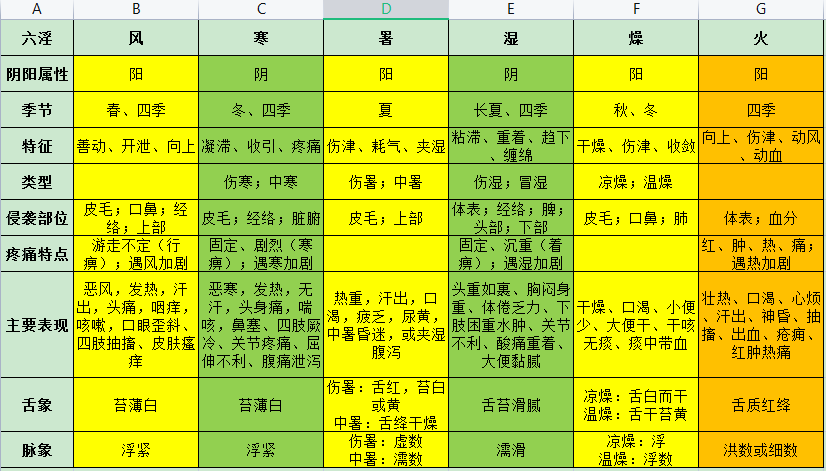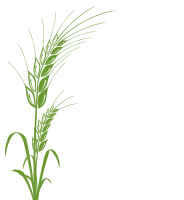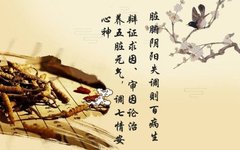

Promoting Traditional Chinese Medicine, Self-Medication for Everyone



In spring, there are a hundred flowers; in autumn, the moon; in summer, a cool breeze; in winter, snow.
If one has no trivial matters on their mind, it is indeed a good time in the human world.
From the Huangdi Neijing: “Wind predominates movement, heat predominates swelling, dryness predominates desiccation, cold predominates floating, and dampness predominates moist diarrhea.”
The differentiation of disease causes, especially the differentiation of external pathogenic Six Excessive Evils, is relatively simple within the entire differentiation system, generally concluded through inquiry. Why do we spend so much time detailing this?
The simpler the concept, the more foundational the logic, and the higher the usage rate. These seemingly only related to external pathogenic diseases have various characteristics of evils that are closely related to subsequent internal injuries and miscellaneous diseases. Internal evils are intricately connected to external evils. Today’s knowledge serves as a foundation, like the base of a pyramid, which is the least noticeable but contains the most material.
In the previous sections, we analyzed the wind, cold, summer heat, and damp evils among the Six Excessive Evils. In this section, we will discuss the dryness and fire evils. If you have not read the previous sections, it is recommended to do so for better understanding of today’s content.
We will first present a table for everyone to enlarge and read, to get a general understanding of the characteristics of the six types of evils:

Dryness Evil:

Imagine when an object becomes too dry, its volume shrinks (contraction), and moisture is lost (injury to body fluids)…
Summarizing the characteristics of dryness evil: dryness, contraction, easily injures body fluids. Dryness evil harms people, often entering through the mouth and nose, primarily affecting the lung defense, manifesting as external dryness disease.
Dryness is the main qi of autumn, with warm dryness and cool dryness distinctions. In early autumn, there is still residual heat from late summer, prolonged sunny days without rain, and the autumn sun exposes the body, leading to warm dryness invading the body; in late autumn, the cold qi near winter combines with dryness to invade the body, resulting in cool dryness.
Clinical Manifestations:
Warm dryness: body heat, slight aversion to wind and cold, headache with little sweating, thirst and irritability, dry cough with little phlegm, possibly blood-streaked phlegm, dry skin and nasal pharynx, dry tongue with yellow coating, pulse is floating and rapid.
Cool dryness: severe aversion to cold, mild fever, headache, no sweating, cough, itchy throat, nasal congestion, white and dry tongue, pulse is floating;
Warm dryness is often due to dryness heat pressing on the lungs, hence similar to wind-heat exterior syndrome.
Cool dryness is often due to the combination of dryness evil and cold evil causing disease, hence similar to exterior wind-cold syndrome;
Dryness is inherently dry and easily injures body fluids, leading to various symptoms of dryness and stagnation, such as dryness of the mouth and nose, dry throat and thirst, dry skin, even cracking, hair loss, short and scanty urination, dry and hard stools, etc.
Dryness easily harms the lungs, which are delicate organs that prefer moisture and dislike dryness. Dryness evil often enters through the mouth and nose, thus easily damaging lung fluids, affecting the lung qi’s dispersing and descending, and even drying out the lung collaterals, leading to dry cough with little phlegm, or phlegm that is sticky and difficult to expectorate, or blood-streaked phlegm, and even wheezing and chest pain.
Fire Evil:
Imagine being in a fire scene, with flames raging, the flames leaping up (ascending); one would inevitably feel restless (disturbing the spirit), jumping around, eager to escape (moving wind); dry mouth and tongue (injury to body fluids); finally escaping, with numerous injuries (moving blood, sores and abscesses)…
Summarizing the characteristics of fire evil: intense heat rising, burning and urgent, often with significant heat signs throughout the body or locally, easily injures yin fluids, causing tendons and vessels to lose nourishment and move wind, and can also force blood to move erratically, leading to bleeding.
Fire is the extreme of heat; when heat reaches a certain level, it becomes fire evil. Fire evil can occur in all seasons, but is more likely to be felt in summer. The difference between fire-induced heat or toxic heat and summer heat-induced heat injury or heat stroke is that summer heat causes systemic sweating, fluid loss, qi deficiency, or even qi collapse, while fire evil causes local redness, swelling, heat, and pain, such as sore throat, abscesses, and toxic swellings.
Compared to other evils, fire evil often comes from human activities rather than nature, such as overly hot working environments like kitchens or boiler rooms; suddenly being in a fire scene where the body is subjected to intense heat; or consuming large amounts of spicy and stimulating foods, as well as barbecued items, all of which can easily lead to fire evil and disease.
Clinical Manifestations: high fever, thirst, red face and eyes, irritability, sweating, or agitation and delirium, nosebleeds, vomiting blood, rashes, or agitation and madness, or seeing abscesses and pus, red tongue, and pulse that is surging and rapid or thin and rapid.
Fire heat is a yang evil, its nature is to rise, burn, and ascend, causing the body’s yang qi to be excessive, “when yang predominates, it becomes heat,” thus manifesting as a syndrome of excess heat, clinically often seen as high fever, aversion to heat, thirst, sweating, and surging pulse.Fire’s nature is to rise, and fire heat evil easily invades the upper part of the body, especially the head and face. Common manifestations include red and painful eyes, sore throat, mouth sores and ulcers, bitter mouth and dry throat, swollen and painful gums, headaches and dizziness, ear swelling or pus discharge, etc.
Fire heat easily injures body fluids and consumes qi; on one hand, it forces fluids to leak out, causing qi to leak with the fluids, leading to fluid deficiency and qi consumption; on the other hand, it directly burns and consumes body fluids, injuring the body’s yin qi. Therefore, diseases caused by fire heat evil often accompany symptoms of thirst and preference for cold drinks, dry throat and tongue, short and red urination, constipation, and signs of fluid injury and yin deficiency, as well as fatigue and lack of energy, and a tendency to be quiet.
Fire heat easily generates wind and moves blood; “generating wind” refers to fire heat evil invading the body, burning fluids, injuring liver yin, causing tendons and vessels to lose nourishment, easily leading to “extreme heat generating wind” syndromes. Clinical manifestations include high fever and confusion, convulsions of the limbs, upward gaze, and opisthotonos. “Moving blood” refers to fire heat evil entering the blood vessels, easily forcing blood to move erratically, leading to various bleeding disorders, such as vomiting blood, nosebleeds, blood in stools, blood in urine, skin rashes, excessive menstruation, and metrorrhagia.
Fire evil easily causes sores and abscesses; when fire evil enters the blood level, it can accumulate locally, eroding flesh and blood, leading to abscesses and sores. The clinical manifestations of positive sores and abscesses caused by fire toxicity are characterized by redness, swelling, heat, and pain.
In textbooks, there is also a section on the evil of “pestilential qi”; here is a brief mention:
Pestilential qi can also be understood as infectious external pathogenic evils, such as those we have experienced with “SARS” and “COVID-19”. The theory of “pestilential qi”: “The disease of plague is not caused by wind, cold, summer heat, or dampness, but by a different kind of evil qi in the world.” This indicates that pestilential qi is distinct from the Six Excessive Evils.
In times of war, poverty, and other harsh environments, “pestilential qi” is more likely to occur, but if the country is stable and hygiene and epidemic prevention measures are observed, the probability of occurrence is greatly reduced.
How fortunate we are to live in a prosperous China, in this flourishing era; let’s not elaborate further on “pestilential qi”! Trust in the strength of our nation, focus on personal health maintenance, and continuously learn TCM knowledge to face various natural evils calmly!
Related articles, click to read:
● The First Part of the Six Excessive Evils: How Nature’s Elements Become Pathogenic (Differentiation of Disease Causes)
● The Second Part of the Six Excessive Evils: How Nature’s Elements Become Pathogenic (Differentiation of Disease Causes)
● TCM Treatment of Diseases, Differentiation Comes First, Understanding “Symptoms”, “Syndromes”, and “Diseases” in TCM (Differentiation of Disease Causes: General Discussion 1)
● TCM Treatment of Diseases, Differentiation Comes First, How Many Differentiation Methods Are There in TCM? (Differentiation of Disease Causes: General Discussion 2)
 Click the blue text to check other collections:
Click the blue text to check other collections:
Classic Formulas and the Use of Patent Medicines: Classic Formulas
Simple Formulas, Treating Diseases and Nourishing Health: Simple Formulas
External Treatment Methods, Treating Diseases Without Medication: External Treatment Methods
Understanding Common Diseases with TCM Thinking: Common Diseases
Reading Good Articles, Learning TCM Easily: Read Good Articles
Learning Hand Diagnosis, Understanding the Health Trajectory of Innate and Acquired: Learn Hand Diagnosis
Learning Tongue Diagnosis, Observing the Health Status of Yourself and Your Family: Learn Tongue Diagnosis
Learning Differentiation, Guiding Health Regulation: Learn Differentiation
 If you like this article,
If you like this article,
please like, share, and thank you for your support!
Follow our public account and set it as a star,
to receive updates on articles promptly!

Click the card below to follow me!

